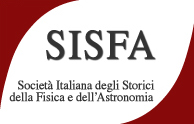Speaker
Description
In his Autobiographical Notes [1] Einstein recognizes the importance of wonder in the cognitive process by stating that it occurs when an experience comes into conflict with a sufficiently stable world of concepts. It is through this emotion that our intellectual world reacts and seeks a solution to the contradiction found; it is as if conceptual development is a continuous escape from wonder. Already in classical philosophy, wonder is considered the starting point of philosophizing as Plato highlights in Theetetus [2] and Aristotle in Metaphysics [3]. The Stagirite himself states that wonder corresponds to the state of not knowing (e.g. amazement at the immeasurability of the diagonal on the side of the square), that is, that aporetic condition which is the task of philosophizing to overcome. The emotion Aristotle speaks of is recognized as an 'interrogating wonder' [4, 5, 6] - to distinguish it from the 'contemplating' one with more aesthetic characteristics - and is the basis of scientific research (also known as epistemic wonder). To describe what the interrogating wonder consists of we will make use of the Dynamic Frames proposed by Barsalou [8] and used profitably in the philosophy of science to explain conceptual changes [11] and to represent knowledge in general [9, 10]. In this communication we will also focus on the role of wonder in the years of Einstein's formation [7] and in particular we will examine the famous mental experiment in which he tries to chase a light beam [12, 13], showing its aporetic conditions with respect to classical physics.
Bibliography
1. Einstein A.,(1951), "Autobiographical Notes" in "Albert Einstein: Philosopher-Scientist".
2. Plato, (2015), "Thaetetus and Sophist", Cambridge University Press.
3. Aristotle, (1991), "The complete works of Aristotle: The revised Oxford Translation", Princeton University Press.
4. Candiotto L, (2019), "Epistemic Emotions: the case of wonder", Journal of Philosophy Aurora, Vol 31, No 54.
5. Metthews G.B, (1997), "Perplexity in Plato, Aristotle, Tarsky", Philosophical Studies, Vol 85, No. 2/3
6. Tobia K.P., (2015), "Wonder and Value", Res Philosophica, 92(4).
7. Gregory F., (2000), "The mysteries and wonders of natural science: Aaron Bernstein's Naturwissensschaftliche Volksbucher and the adolescent Einstein", in "Einstein the formative years, 1879-1909", Birkhauser, 23-41
8. Barsalou L.W., Halle C.R., (1993), "Components of conceptual representation: from Feature lists to recursive frame" in "Categories and Concepts: Theoretical Views and inductive data analysis", Academic Press, 97-144.
9. Kornmesser S., (2018), "Frames and Concepts in the Philosophy of Science", European Journal for Philosophy of Science, Vol. 8, 225, 251.
10. Kornmesser S., Shurz G., (2018), "Analyzing Theories in the Frame Model", Erkenntnis.
11. Andersen H., Barker P., Chen X., (2006), "The cognitive structure of Scientific Revolution", Cambridge University Press.
12. Norton J.D., (2013), "Chasing the light" in "Thought Experiments in Philosophy, Science and Arts", Routledge, 123-140
13. Kaku M., (2004), "Einstein's cosmos; how Einstein's vision transformed our understending of space and time", W.W. Norton/Atlas Book.

